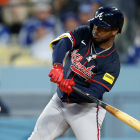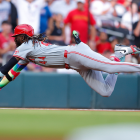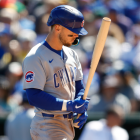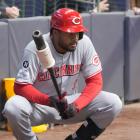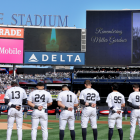This past Sunday, on July 2, the 2017-18 international signing period opened. That was the day the 30 MLB teams could begin signing eligible international amateur players. Most are teenagers from Latin America. There are always a few players from Asia and Europe each year as well.
As always, teams jumped into action and signed many of the top available prospects on the first day of the signing period. In many cases the two sides agreed to a deal ahead of time. That is technically against the rules, but every team does it and MLB doesn't enforce the rule. So teams scout players for months (and often years) in advance, agree to a deal, then wait until July 2 to put pen to paper.
Per MLB.com, here are the seven-figure July 2 signings this year:
- Rays: SS Wander Franco ($3.825 million)
- Red Sox: C Daniel Flores ($3.1 million), SS Danny Diaz ($1.6 million), SS Antoni Flores ($1.4 million)
- Twins: SS Jelfry Marte ($3 million)
- Diamondbacks: OF Kristian Robinson ($2.55 million)
- Phillies: SS Luis Garcia ($2.5 million)
- Mets: SS Ronny Mauricio ($2.1 million), SS Adrian Hernandez ($1.5 million)
- Brewers: OF Larry Ernesto ($1.8 million), OF Carlos Rodriguez ($1.335 million)
- Mariners: OF Julio Rodriguez ($1.75 million), SS Juan Querecuto ($1.225 million)
- Indians: SS Aaron Bracho ($1.5 million), OF George Valera ($1.3 million)
- Marlins: SS Ynmanol Marinez ($1.5 million)
- Yankees: OF Everson Pereira ($1.5 million)
- Blue Jays: RHP Eric Pardinho ($1.4 million)
- Rangers: OF Wildred Patino ($1.3 million), SS Keyber Rodriguez ($1 million), RHP Damian Mendoza ($1 million)
- Tigers: SS Alvaro Gonzalez ($2 million)
There are still more seven-figure signings to come -- three of MLB.com's top 11 international prospects remain unsigned -- plus countless six-figure signings have been made. Ben Badler of Baseball America has a full recap of each team's activity since the signing period opened July 2. Clubs have been very busy internationally the last few days.
This year, for the first time, teams are held to a strict international spending hard cap. Once upon a time teams could spend whatever they wanted internationally. Now they're held to a hard cap. The largest market teams could spend up to $4.75 million this year. Mid market teams had $5.25 million and small market teams had $5.75 million. Clubs can trade for up to 50 percent more bonus pool space, which the Red Sox did to afford those three signings above.
#RedSox traded OF/1B Nick Longhi, their No. 14 prospect, to the #Reds for more international pool space this morning
— Kyle Glaser (@KyleAGlaser) July 2, 2017
It should be noted several teams are limited to a maximum bonus of $300,000 this signing period as part of the penalties for exceeding the soft international spending cap last year. They can hand out as many $300,000 bonuses as they can fit under the hard cap, but $300,000 is the maximum they can give an individual player. That took them out of the running for the top available talent. Those teams: Athletics, Astros, Braves, Cardinals, Cubs, Dodgers, Giants, Nationals, Padres, Reds, and Royals.
All of this week's international signing period activity figures to have a pretty significant impact on the upcoming offseason. Japanese right-hander Shohei Otani, the best player in the world not under contract with an MLB team, is subject to the international hard cap because he is only 23 years old. He'll have to wait two years, until he's 25, to be exempt from the hard cap. Otani doesn't want to have to wait that long. Neither do MLB teams. But those are the rules.
The Nippon Ham Fighters, Otani's team, could still make him available to MLB clubs this winter through the posting system. However, as you can see above, most teams have already spent their international bonus money, and many others are limited to a maximum $300,000 bonus. There simply isn't much hard cap space left over for Otani. Either he takes a relatively small six-figure bonus, far below his actual worth, or he doesn't come over to MLB this year. The latter seems likely.
There has been speculation a team could sign Otani to a relatively small signing bonus, say $300,000 or so, then sign him to a massive extension next year as a way to get around the hard cap. Apparently MLB will not allow such an agreement, however. From Jeff Passan of Yahoo! Sports:
Teams are wary still. One GM put it this way: "Does he want to come over here badly enough that he's essentially going to pay $100 million a year for two years to play?" Theoretically, there are ways to circumvent this. One scout familiar with Otani predicted a "handshake deal" in which the team gives him a contract extension after the first season, though high-ranking sources at MLB said the league expects to be vigilant to ensure the sanctity of the system is not made a mockery by extralegal payments.
How they might adjudicate that is tricky. If, say, Otani were to sign a contract extension after his first season, and it weren't close to in line with previously established market values for players with a year of service time, it would be obvious that some sort of deal had been struck. The Pandora's box of MLB intervening in contracts, though, is one that it dare not open, not in the name of enforcing a rule as flaccid as the international restrictions may prove to be.
Once the hard cap was put in place, Otani's best case scenario financially this offseason was a small market team trading for the extra 50 percent of their $5.75 million cap, and shoveling the entire $8.625 million in front of him. That's a nice payday. But it's also a fraction of Otani's actual worth. A 23-year-old who is an ace on the mound and a 20-plus homer threat at the plate is insanely valuable.
Now, because just about all 30 MLB teams have spent their hard cap space, there's very little left over for Otani. He has three options at the moment:
- Come to MLB this offseason and receive a small six-figure bonus.
- Come to MLB next offseason and hope teams save some more hard cap space.
- Come to MLB in two years, when he's no longer subject to the hard cap, and sign a contract of any size.
Otani, who has missed most of the 2017 season with a nagging ankle injury, will earn $2.385 million this year, so it's not like he's going broke in Japan. But still, he could earn much more in MLB down the line. Perhaps it's worth taking the small bonus now just to get his foot in the door. Then again, if Otani is confident in his talent and ability to stay healthy, why not wait two years until he turns 25 and is no longer subject to the hard cap? Waiting two years could equal hundreds of millions of dollars in his pocket.
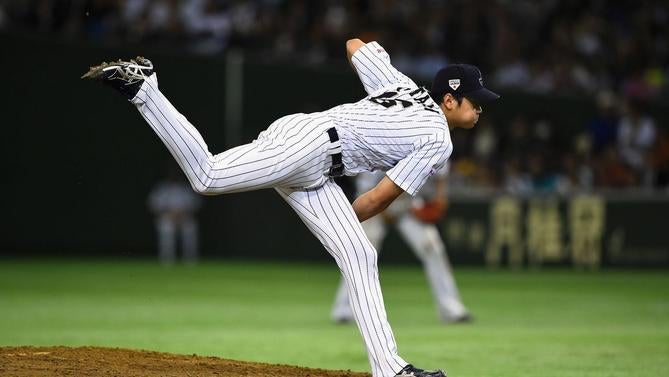
The way I see it, Otani coming over to MLB this offseason was unlikely to start with. The hard cap severely limited his earning potential, and my thinking was he'd prefer to stay home in Japan the next two years and make good money rather than come to MLB to make relative peanuts. Now that just about every MLB team has maxed out their international bonus space this year, I think it closes the door completely on Otani coming this winter. There's not enough financial incentive.
The international hard cap was put in place this year, with the new collective bargaining agreement, and it is making it less likely Otani will join an MLB team in the near future. That's bad. It's completely backwards. MLB and the MLBPA should be looking for ways to attract young and exciting talent like Otani, not push players like him away. What's done is done though. The hard cap is in place, teams have spent their international money already, and there's very little left for Otani.
Because of the hard cap, it was going to be very difficult to convince Otani to take a discount to come over the MLB this offseason. Now it'll be nearly impossible.
![[object Object] Logo](https://sportshub.cbsistatic.com/i/2020/04/22/e9ceb731-8b3f-4c60-98fe-090ab66a2997/screen-shot-2020-04-22-at-11-04-56-am.png)










